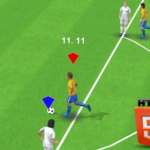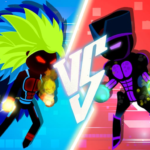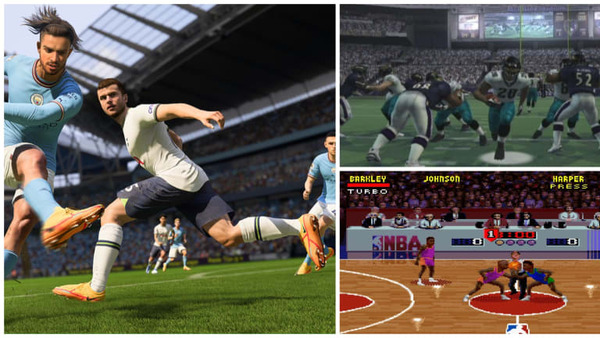Since its official launch in 2020, Valorant has quickly risen as one of the premier tactical shooters in the gaming world. Developed by Riot Games, the title merges precise gun mechanics with unique agent abilities to form a complex, team-based experience. Combining strategic depth and fast-paced action, Valorant appeals to both casual and competitive gamers alike, establishing itself as a key player in esports and tactical shooters.
The Origins of Valorant: Riot Games Enters the Shooter Market
Valorant's roots trace back to Riot Games' desire to expand beyond their flagship MOBA, League of Legends. Announced in 2019 under the codename "Project A," Valorant was designed to capture the tactical precision of games like Counter-Strike while incorporating hero-based gameplay elements. Riot’s expertise in competitive gaming and community engagement set high expectations for this ambitious project.
Following a closed beta period that began in early 2020, Valorant garnered immediate attention for its crisp mechanics, balanced agents, and low system requirements, making it accessible to a broad player base. Its combination of tactical gunfire and distinct agent abilities introduced fresh layers of strategy, setting it apart in a crowded shooter market.
Core Mechanics: The Heart of Valorant’s Tactical Experience
Valorant centers around 5v5 rounds where teams alternate between attacking and defending bomb sites. Unlike pure gun-based shooters, Valorant incorporates agents, each equipped with unique abilities that affect movement, vision, or combat. This integration creates a dynamic environment where strategic coordination and individual skill both matter deeply.
The gunfire emphasizes precision, recoil control, and positioning, rewarding individuals who master shooting fundamentals. Meanwhile, agent abilities offer tactical options like smoke screens, reconnaissance tools, or area denial, enabling diverse team strategies. The synergy between gun mechanics and abilities encourages creativity and teamwork, making every match unique.
Valorant Agents: Diverse Abilities Shaping Strategic Depth
Agents in Valorant are categorized into classes such as Duelists, Controllers, Sentinels, and Initiators, each fulfilling different tactical roles. For example, Duelists focus on entry fragging and aggressive engagements, while Controllers manipulate vision and control enemy movement. Sentinels specialize in defense and support, and Initiators enable team engagements with disruptive abilities.
This diverse cast encourages participants to experiment and find their preferred combat style. Riot frequently updates the roster with new agents and balance changes to keep the meta evolving. Each agent’s toolkit offers situational advantages, demanding constant adaptation and communication to maximize team effectiveness.
Maps and Environmental Strategy in Valorant
Valorant features multiple maps, each designed with unique layouts and strategic elements. From tight corridors to open spaces, maps like Bind, Split, and Haven challenge teams to master map control, timing, and positioning. Understanding chokepoints, bomb sites, and rotation paths is crucial for tactical success.
Environmental features such as teleporters or one-way doors add complexity, requiring participants to adapt their agent choices and strategies accordingly. Riot consistently refines maps to maintain balance and competitive viability, while adding new battlegrounds to diversify gameplay experiences.
Competitive Mode and Ranking System
Valorant’s ranked mode allows individuals to test their skills in a highly competitive environment. The ranking system ranges from Iron to Radiant, rewarding consistent performance and teamwork. The system evaluates various metrics such as kills, assists, objective control, and round wins to place individuals accurately.
Competitive matches emphasize communication, strategy, and clutch potential, making ranking progression both challenging and rewarding. Riot’s commitment to anti-cheat measures and fair matchmaking helps maintain integrity and satisfaction within competitive encounters.
Valorant’s Visuals, Sound Design, and Performance Optimization
Valorant employs a clean, stylized art style that balances clarity with aesthetic appeal. This design choice enhances visibility and minimizes distractions during fast-paced engagements. Sound design plays a crucial role, with precise audio cues for footsteps, abilities, and gunfire enabling strategic awareness and reaction.
Additionally, Valorant is optimized to run smoothly on a wide range of hardware, including lower-end PCs. This performance focus broadens accessibility, ensuring competitive integrity by reducing input lag and frame drops, which are critical in tactical shooters.
Community, Esports, and Global Impact
Since launch, Valorant has rapidly grown into a prominent esports title. Riot Games supports the scene with structured tournaments, regional leagues, and large-scale international events. The game’s spectator mode and broadcasting tools enhance viewership, making Valorant a staple in competitive gaming.
Community engagement remains strong, with frequent updates, agent reworks, and map changes influenced by participant feedback. The blend of grassroots tournaments and professional leagues fosters a vibrant ecosystem, contributing to Valorant’s global popularity.
Valorant Ratings and Critical Reception
Valorant has received widespread acclaim for revitalizing the tactical shooter genre. Reviewers highlight its precise gun mechanics, innovative agent system, and polished gameplay. Metacritic scores generally fall between 80 and 90, reflecting consistent quality and strong community reception.
The active player base across regions remains steady, with Riot’s esports investment further elevating the game’s profile. While some critiques focus on balancing and accessibility, Valorant’s steady growth indicates a successful blend of competitive depth and entertainment.
Conclusion: Valorant’s Place in the Future of Tactical Shooters
Valorant stands as a significant evolution in tactical shooters, merging traditional gun mechanics with inventive agent abilities to create a rich strategic landscape. Its continuous updates, community focus, and esports integration position it for long-term success. For enthusiasts seeking a challenging yet rewarding experience, Valorant offers depth, variety, and competitive excitement that define modern tactical gaming.
As Riot Games continues to expand the universe with new content and innovations, Valorant’s impact on both casual and professional scenes is poised to grow, solidifying its role as a benchmark in shooter excellence.
































